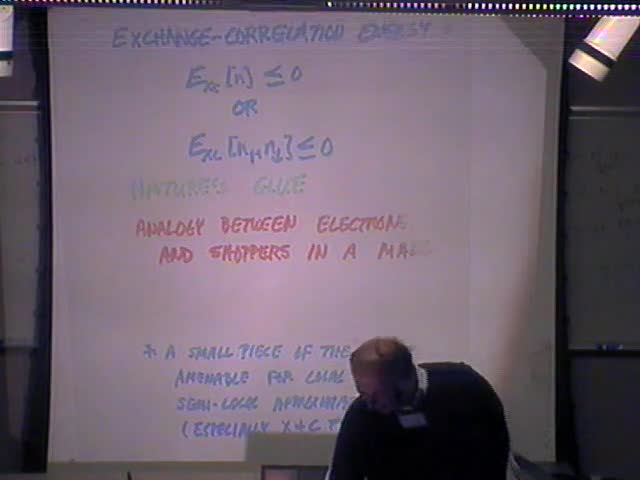Abstract
Electronic structure theory predicts what atoms, molecules and solids can exist, and with what properties. The density functional theory (DFT) of Hohenberg, Kohn and Sham 1964-65 is now the most widely used method of electronic structure calculation in both condensed matter physics and quantum chemistry. Walter Kohn and John Pople shared the 1998 Nobel Prize in Chemistry for this theory and for its computational implementation. This tutorial will begin by explaining why the computational demands are far smaller in DFT than in many-electron wavefunction theory, especially for large molecules and for solids. Two fundamental theorems of DFT will be presented and proven by the transparent constrained-search approach of Levy: (1) The ground-state electron density n of a system of N electrons in the presence of an external scalar multiplicative potential v determines v and hence all properties of the system. (2)
There exists a universal density functional Q[n] such that minimization of Q[n] +
for given N and v yields the ground-state density n and energy E. For accurate
approximation of Q[n], one needs to introduce single-electron Kohn-Sham orbitals that yield the non-interacting kinetic energy part of Q[n] exactly, reducing the ground-state
problem to a problem of noninteracting electrons moving in a selfconsistent density-dependent effective potential. Then the only part of Q[n] that must be approximated is the many-body exchange-correlation energy E_xc[n], which will be defined precisely. From the definition, many exact properties of E_xc[n] can be derived and employed as constraints to construct nonempirical or empirical approximations to E_xc[n]. Some important constraints will be reviewed. A ladder of approximations, from the simplest
local density approximation to the most elaborate nonlocal approximations, will be reviewed, the surprising success of even the simplest one will be explained, and error estimates for each level will be presented. It will become apparent that local or semilocal approximations can suffice for most properties of most systems at or near the equilibrium nuclear positions, but that full nonlocality is needed to describe situations in which electrons are shared between separated subsystems, with noninteger average electron number in each subsystem. The exact density functional theory of such systems, as presented by Perdew, Parr, Levy and Balduz 1982, will be presented. The time-dependent density functional theory, which can describe time-dependent and excited
states, will be briefly reviewed. Some outstanding physical and mathematical problems of DFT will be summarized.
